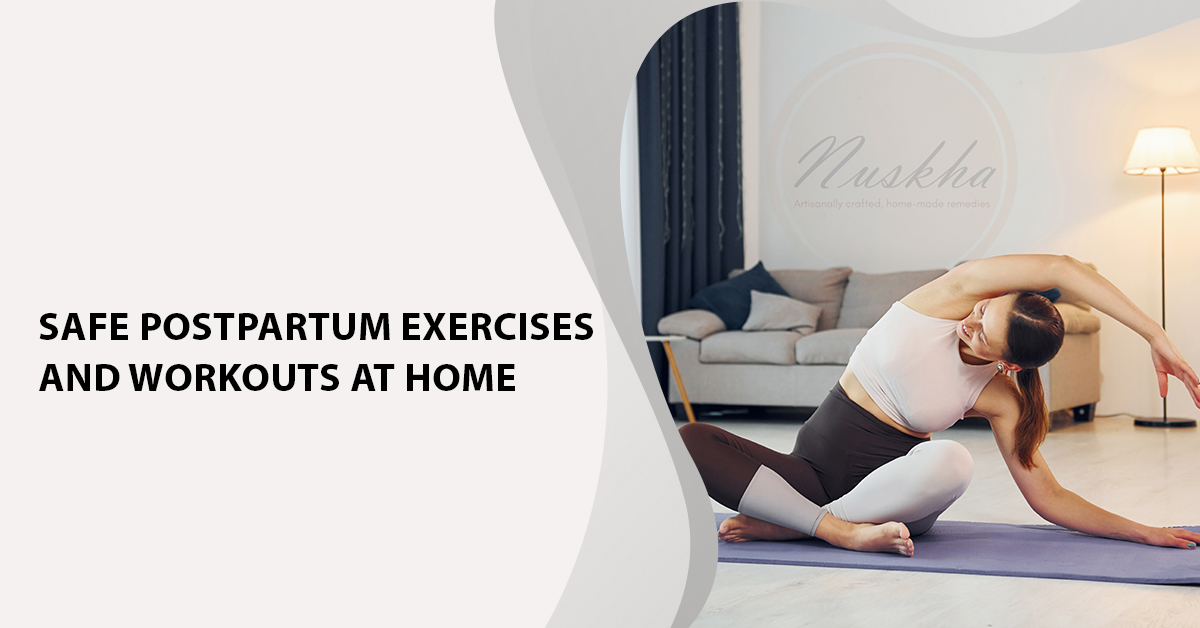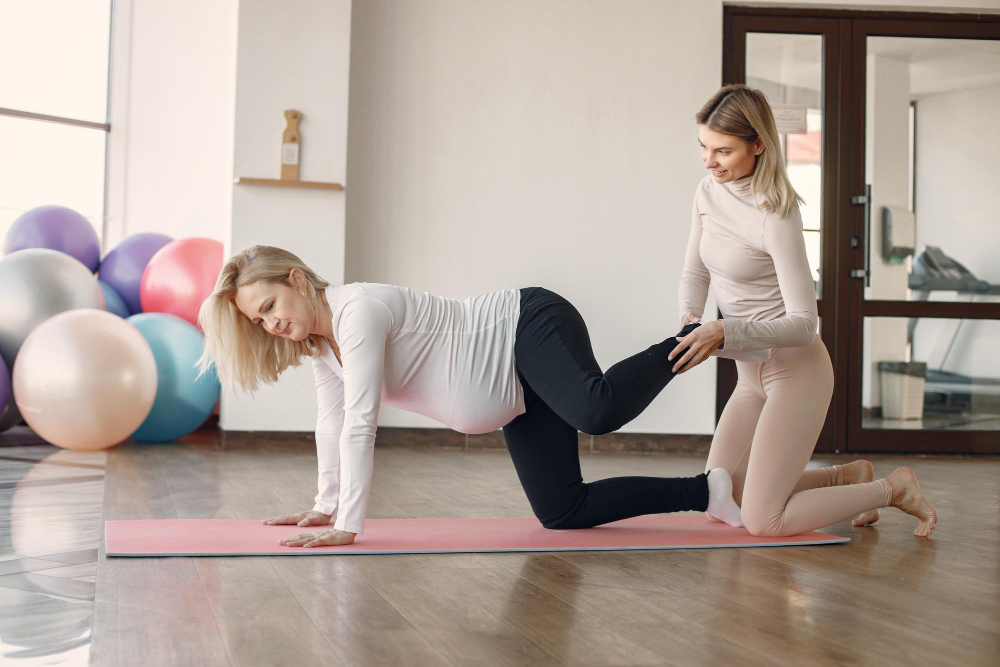
Some moms can't wait to start working out again after having a baby. But you can't just hop on the treadmill or return to the pilates classes you took before you had a baby.
When it comes to postpartum workout plans, new moms should be realistic and patient. After all, it took about 40 weeks to grow a pregnant body, and it can take about the same amount of time to feel like you're getting back to your pre-pregnancy self.
Whether your labour was short or long, or you had surgery, your body goes through many changes to grow and birth a baby, and you should take that into account in everything you do, including exercise.
Exercising after giving birth is beneficial for both your physical health and your mental state and stress levels. Working exercise not only aids in physical recovery but also gives you a way to refocus on yourself after becoming a parent, which may seem a little out of reach at the moment.
Finding time to exercise might be challenging while you're caring for a baby, but it's vital for your recovery.
If you had any complications during your pregnancy or delivery, you should get your doctor's okay before starting an exercise programme.
It may be a few weeks after giving birth before your doctor gives you the green light to begin postpartum exercise (or longer if you have a labour complication). Meanwhile, here are nine essential actions to do while developing a new exercise routine after giving birth:
Even for the fittest people, it's not a good idea to resume exercise so soon after giving birth. Verify with your physician that the skin has fully healed and that you have been given the all-clear to resume your normal walking routine.
Since the uterus is still mending, you should probably pop an ibuprofen before getting back into the full swing of things. You should let your body rest for a while and go for a stroll to help it recover. It's possible to spoil your own healing efforts if you put in too much effort in the beginning.
When you start doing harder exercises, pay attention to what your body signs you. Some people find that their bleeding gets heavier again after it had slowed down. This is a sign that the body needs more time to heal before starting a post-pregnancy workout plan.
If the pelvic floor is weak, exercises like crunches, pilates, and general abdominal work can put too much strain on it and stop it from healing. It can even cause an organ to slip out of place.
One of the first types of postpartum exercise you can start doing every day is a kegel routine, which can help you re-strengthen or even just get to know your pelvic floor muscles again.
Relaxin, the hormone that makes ligaments and joints more flexible during childbirth and pregnancy, can stay in the body for up to 6 months after giving birth. This can lead to loose joints and a pelvis that moves around. Again, just make sure that the exercise you choose after giving birth is not too jerky.
Even though "sleep when your baby sleeps" is a common piece of advice for new parents, not everyone follows it. Taking a few minutes to just relax after a workout can really help you feel better. If you've had a good night's sleep and feel refreshed, you'll have a lot more to give to those who need you.
Before you start working out again, you should make sure your goals are realistic. Your body has changed, so you won't be as strong as you were right away. You should do simple exercises that work for the big muscle groups.

Start with 10 to 20 minutes of moderate-intensity exercise a day and work up to 30 or more minutes. If you did vigorous exercise before you got pregnant, you could do it again after giving birth as long as you do it slowly and with your provider's help.
All of these exercises can be done either sitting down or standing up (on a chair or on an exercise ball):
Shoulder presses: Start with your arms bent so your palms are facing out and your hands are close to your shoulders. Stretch your arms up until they are vertical, then slowly bring them back down.
Bicep curls: Start with your arms at your sides, palms facing forward and fully extended. Hold a lightweight in each hand. Raise your hands so that your elbow is bent 90 degrees but your wrists are still straight. Lower and do it again.
Lateral raises: Hold the weights at your sides with your palms facing in toward your body. Lift your arms up and out to the side, stopping when they are straight out from your shoulders in a T-shape. Lower and do it again.
Overhead tricep extensions: Use only one weight. Hold it with both hands above your head (your arms will be extended straight up). Bend your arms and lower the weight behind your head while keeping your elbows pointing forward. Then, spread the arms to lift the weight back up, and do it again.
Bent-over dumbbell rows: Keep your back straight as you bend over about 45 degrees. Hold a dumbbell in both hands with the palms facing the body. Lift weights until your arms reach shoulder height or just below it. Slowly lower yourself and do it again. Stay bent over the whole time.
Use light dumbbells to do 12 to 15 reps of each move. Do a circuit of three to five rounds once or twice a week.
Along with the curl-up progression for the core and pelvic floor after birth. Aim to do these exercises for 5 to 15 minutes a day.
Deep Belly Breathing: As your organs move back to where they were before you gave birth, your breathing may feel different for the first few days. Deep breathing can help your body and mind feel better after giving birth. Put your hands low on your stomach and slowly breathe in until you can feel your hands move. Then breathe out slowly. Five to eight times.
Abdominal Bracing: Start by lying on your back with your spine in a neutral position. Imagine that someone is about to punch you in the stomach and you need to tighten your muscles to protect yourself. Reduce the space between your rib cage and hip bones. Think about trying to stick your whole backbone to the ground. Hold for a few seconds while keeping your normal breathing. Unwind, and then do it 10 times.
Kneeling Pelvic Tilts: Begin on your hands and knees. Inhale deeply and let your tummy to relax. As you exhale, brace your core. Simultaneously, contract your glutes and tuck your pelvis, aiming to reduce the distance between your rib cage and hip bones. Let go, then repeat ten times.
Squats: Stand with your feet about hip- or shoulder-width apart to do a basic squat. Slowly bend your knees and squat down, pushing your hips back while keeping your torso straight. Keep your head up and, if you need to, stretch your arms out to keep your balance. Keep a slight bend in your knees when you stand back up.
Forward lunges: Stand with your feet a little bit apart. Step forward and bend your front knee until it's almost at a right angle. Keep your torso straight and use your core as you step, bend, and return to the starting position.
Reverse lunges: Instead of taking a step forward, take a step back into a lunge. If you can't stay on your feet, grab a chair.
Glute bridges: Start by lying on your back with your feet flat on the floor and your knees bent. As you lift your hips, tighten your abs and glutes, making a straight line from your knees to your upper back and shoulders. Hold for a breath, and then slowly lower yourself back to the ground.
Holding dumbbells, do 10 to 20 reps of each move (although most exercises can be performed without them if needed). Do a circuit of three to five rounds once or twice a week.
Safe exercise after giving birth is very good for your physical and mental health as you get back to normal after giving birth. Spend some time getting to know and liking your body after giving birth.
It may look and feel different from how it did before you got pregnant, but don't forget that it did something amazing: it grew and delivered your baby. As you heal and get used to being a parent after giving birth, exercise will help keep your mind and body healthy and strong